If you're used to buying store-bought pesto, I promise homemade is very easy and fast to make - ready in just 5 minutes - you have a fresh batch of nut-free, vegan basil pesto using the ingredients you love most.
Ths homemade batch of bail pesto is PERFECT for a creamy pesto gnocchi.
I like to be in control of what goes into my food, so making it at home is the best way to do that. In this case, we’re going nut-free, dairy-free, plant-based, and boosting up the garlic.
Similar to sofrito, basil pesto is a blend of aromatics and fresh herbs turned into a paste. Pesto is usually made with nuts, including walnuts, cashews, and almonds. But most often with pine nuts.
Recipe Notes
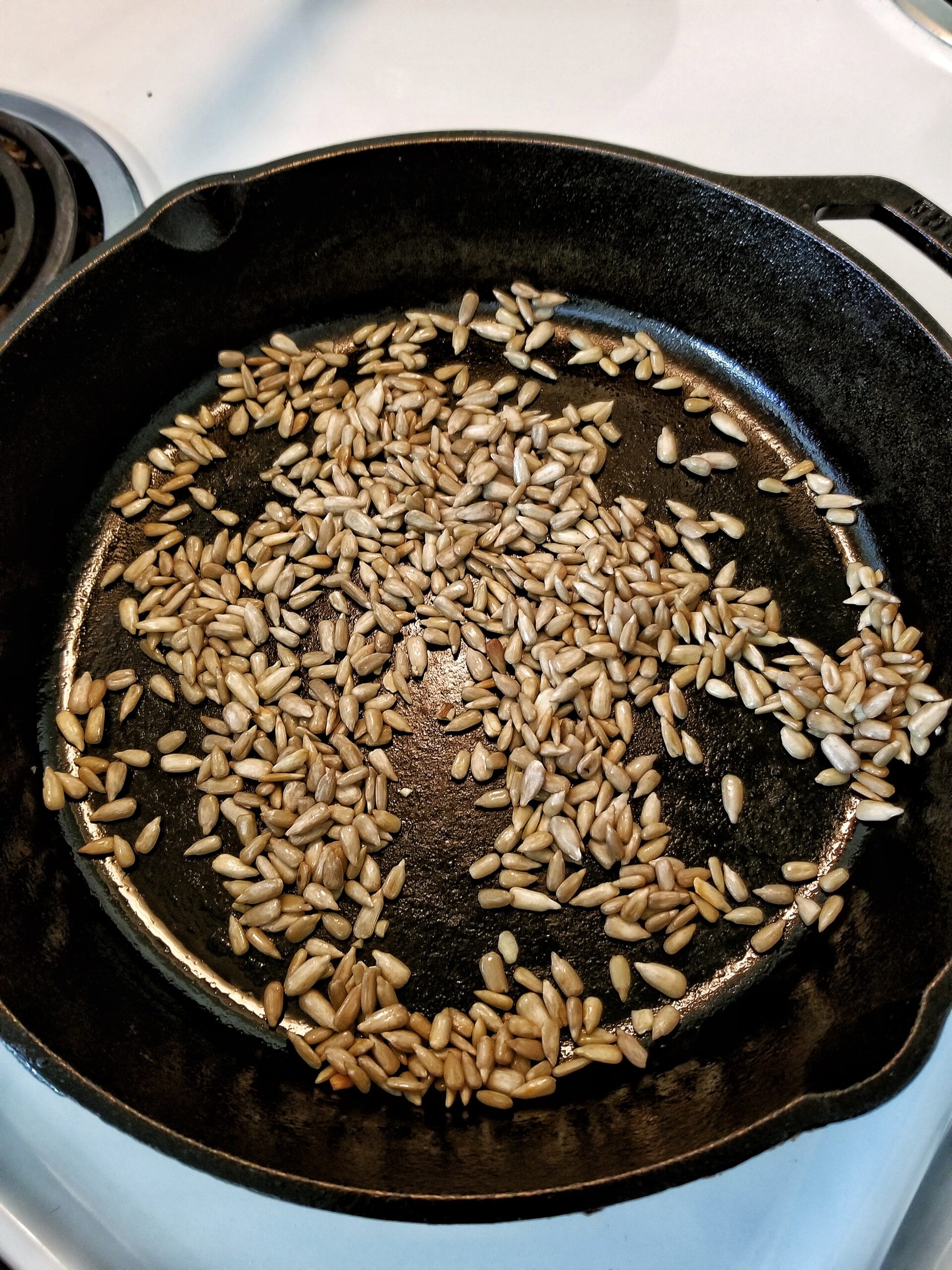
- Although pine nuts are the go-to for traditional basil pesto, I opted for toasted sunflower seeds instead. I wanted to use what I had in abundance in my pantry - which happened to be raw sunflower seeds. The sunflower seeds were dry roasted on a skillet for a couple of minutes until golden and fragrant.
- I used a blender. However, other kitchen tools that can be used to grind up pesto include a mortar and pestle and a food processor. I have a blender, so that’s what I will be using. Be sure to scrape the sides and push down the ingredients in between blends (make sure the blender is not actively blending while doing this).
Pesto FAQs
What Can I Use Instead Of Nuts In Pesto?
To keep this recipe nut-free, I opted to use toasted sunflower seeds. Other nut-free substitutes for pesto include hemp seed.
Fun fact: pine nuts are the edible seeds of pines. So technically, they are not nuts and can be used in a nut-free pesto recipe.
Can I Eat Pesto If Allergic To Nuts?
Plenty of pesto recipes are made nut-free. Just be sure to double-check their ingredients list.
If you’re allergic to pine nuts, go for a pesto that uses another nut or seed, or omits both seeds and nuts altogether.
What To Eat With Pesto?
I love using pesto as a healthy, full-bodied spread in sandwiches or veggie wraps/burritos. However here are a few other ideas:
- Toss the sauce with pasta
- Use it as a sauce for homemade pizza
- Spread over roasted cauliflower steaks
- Make a pesto rice
- Add it to a bowl of comforting soup
- Toss it with roasted vegetables
- Combine with a classic spaghetti sauce
How To Freeze & Store?
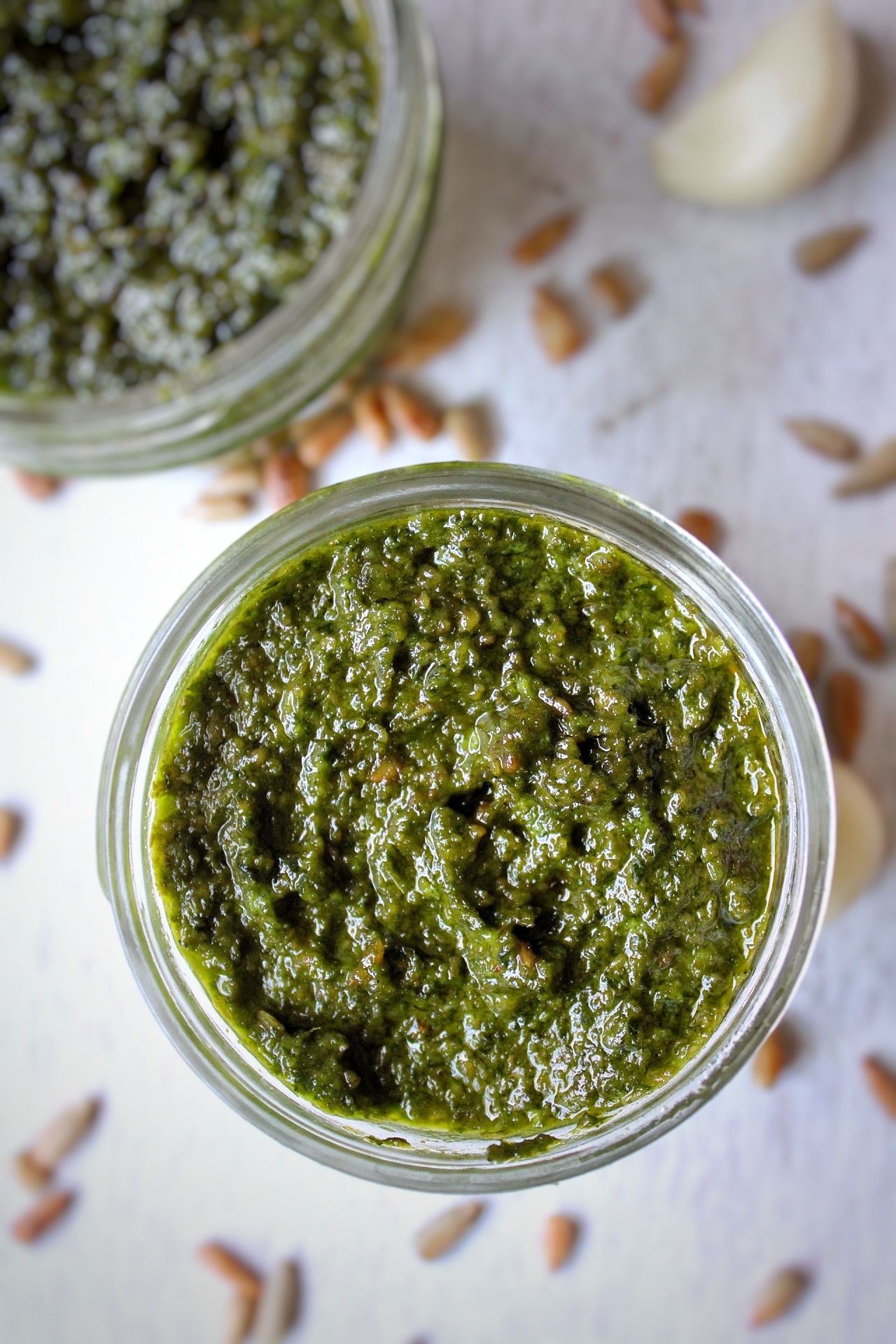
This recipe makes about 8 ounces worth of pesto. I like to use two, 4-ounce canning jars to store.
They can keep in the refrigerator for up to 5 days, or in the freezer for several months.
The pesto can turn brown or dark from exposure to oxygen - this is normal.
However, to prevent the basil pesto from turning brown/dark on top, fill a 4-ounce canning jar with the pesto to nearly to the top. Then, pour a bit of olive oil, enough to cover.
The olive oil will act as a seal to prevent oxidation.
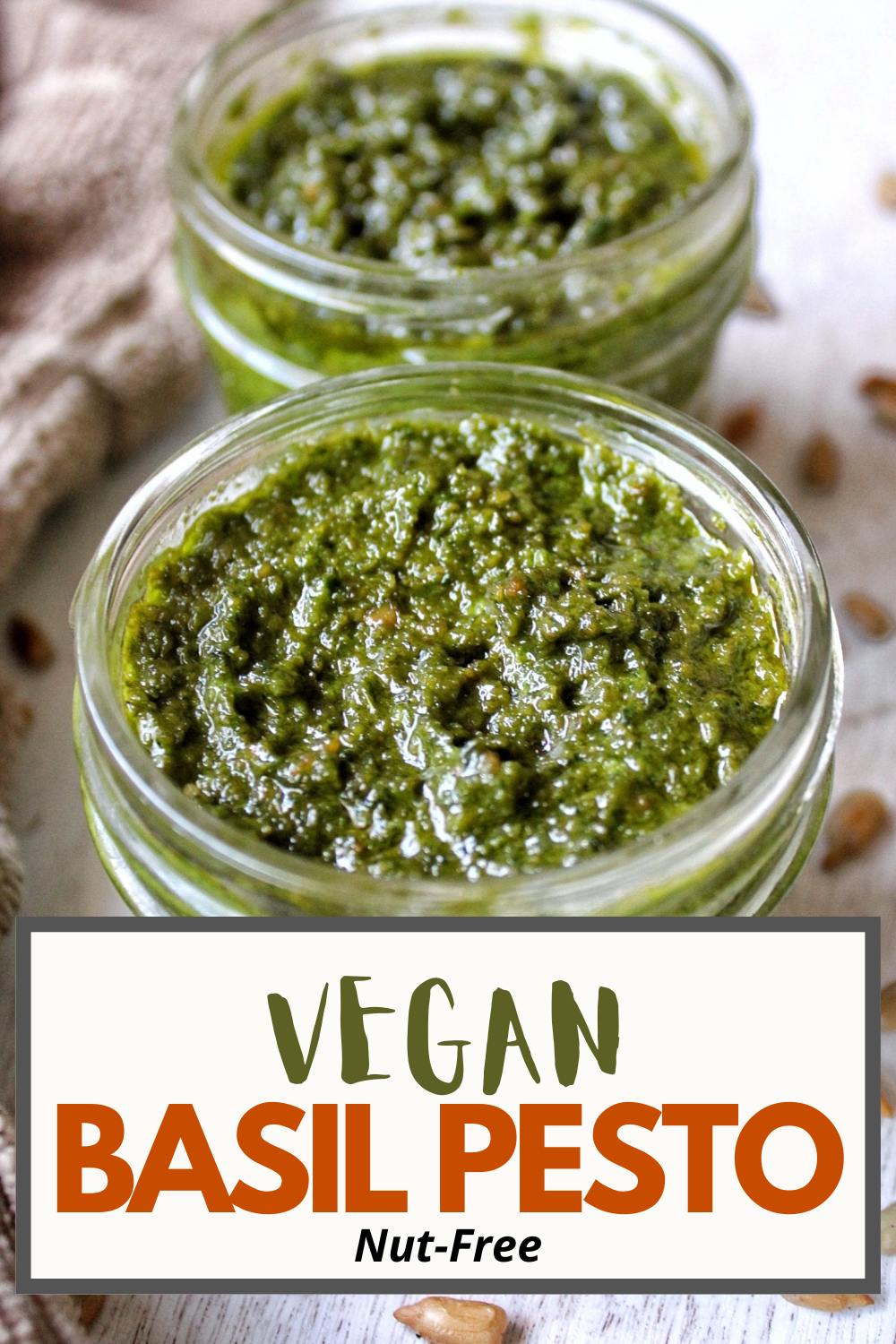
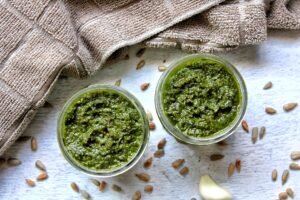
Nut-Free Vegan Basil Pesto
Ingredients
Instructions
- Set a cast-iron skillet or non-stick pan over medium heat. Once hot, add the sunflower seeds and toast for about 2-3 minutes, stirring occasionally.
- In a blender or food processor, add the fresh basil, toasted sunflower seeds, garlic cloves, salt, and olive oil. Blend until you have a paste. Scrap the sides and push the ingredients towards the blade in between blends - when the blender is not active.
- Use immediately, or store in the refrigerator for up to 5 days, or store in the freezer.
Notes
- To freeze, pour the pesto into a mason jar and add a bit of olive oil on top to act as a seal to prevent oxidation. Then, close with a lid.
- I blend my pesto on a low “liquid” setting on my blender.
- If you want a boost of umami or "cheesiness" in this pesto recipe, add 1-2 tablespoons of nutritional yeast.
Nutrition
Did you try out this Nut-Free Vegan Basil Pesto recipe?
Please leave a comment below, share it, rate it, or tag a picture @plantbasedandbroke on Instagram and hashtag it #plantbasedandbroke. Show off that creation with us.

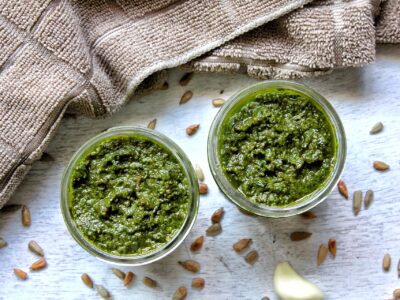
 Spring Vegetable Fried Rice with Asparagus
Spring Vegetable Fried Rice with Asparagus
Leave a Reply